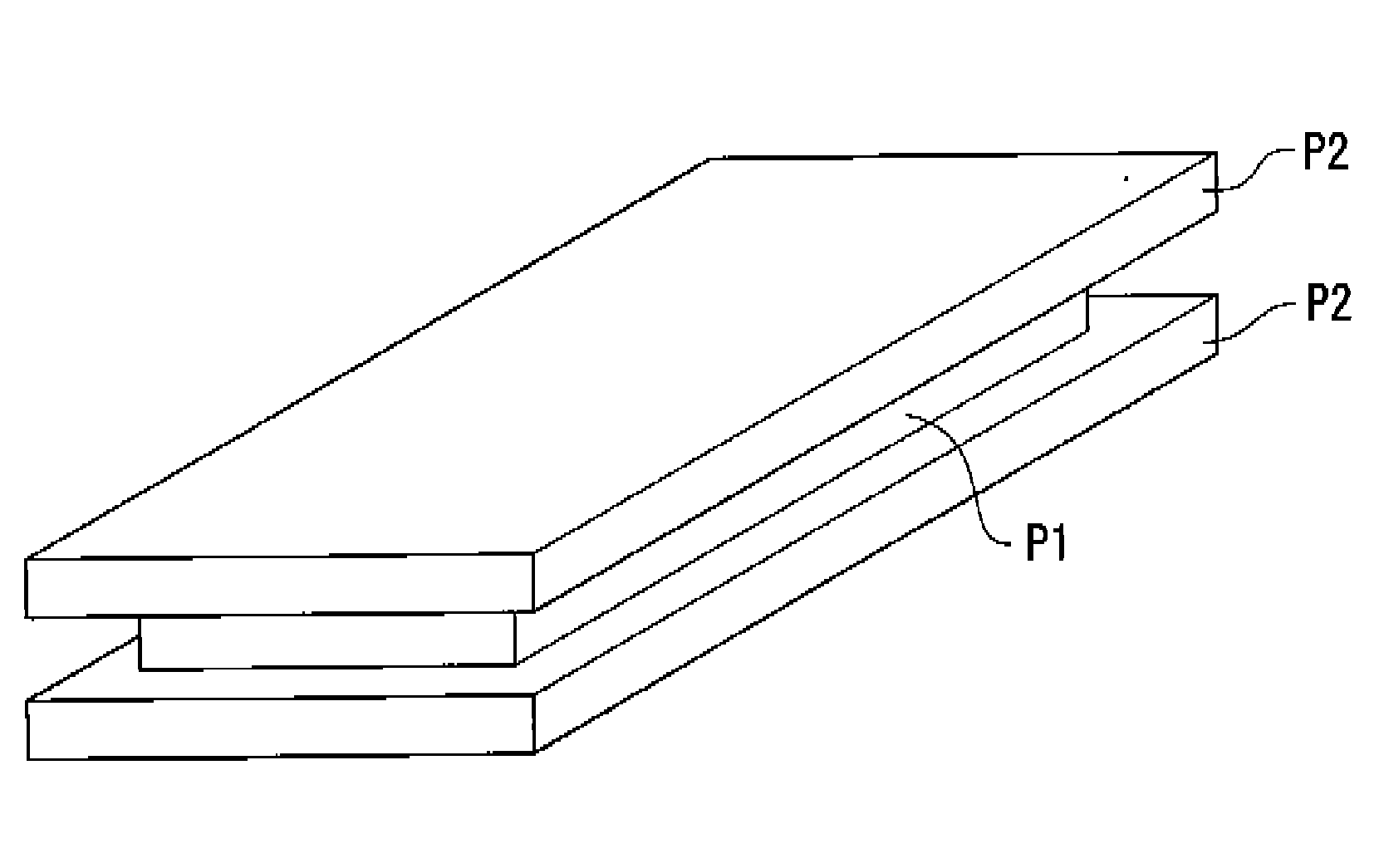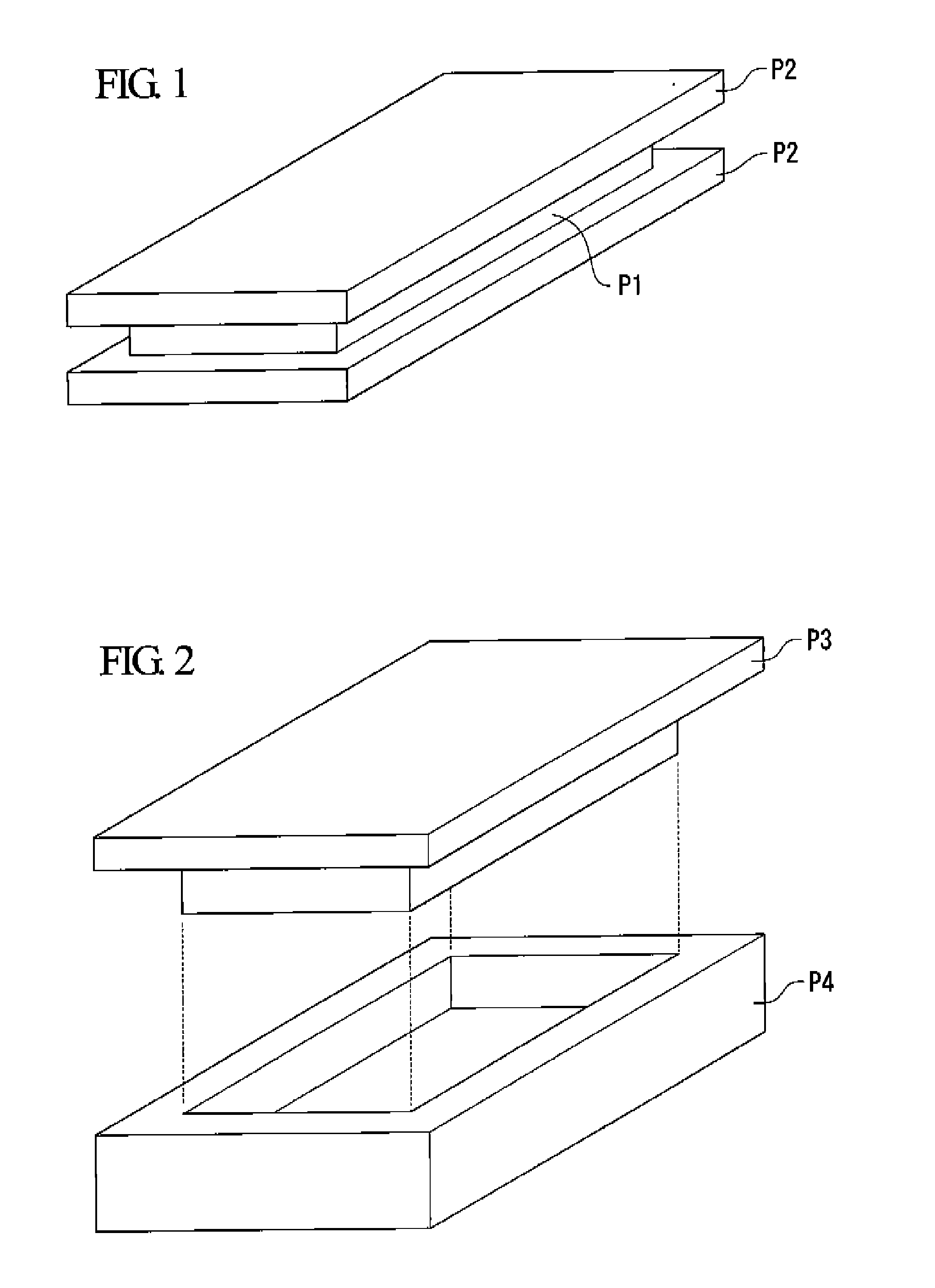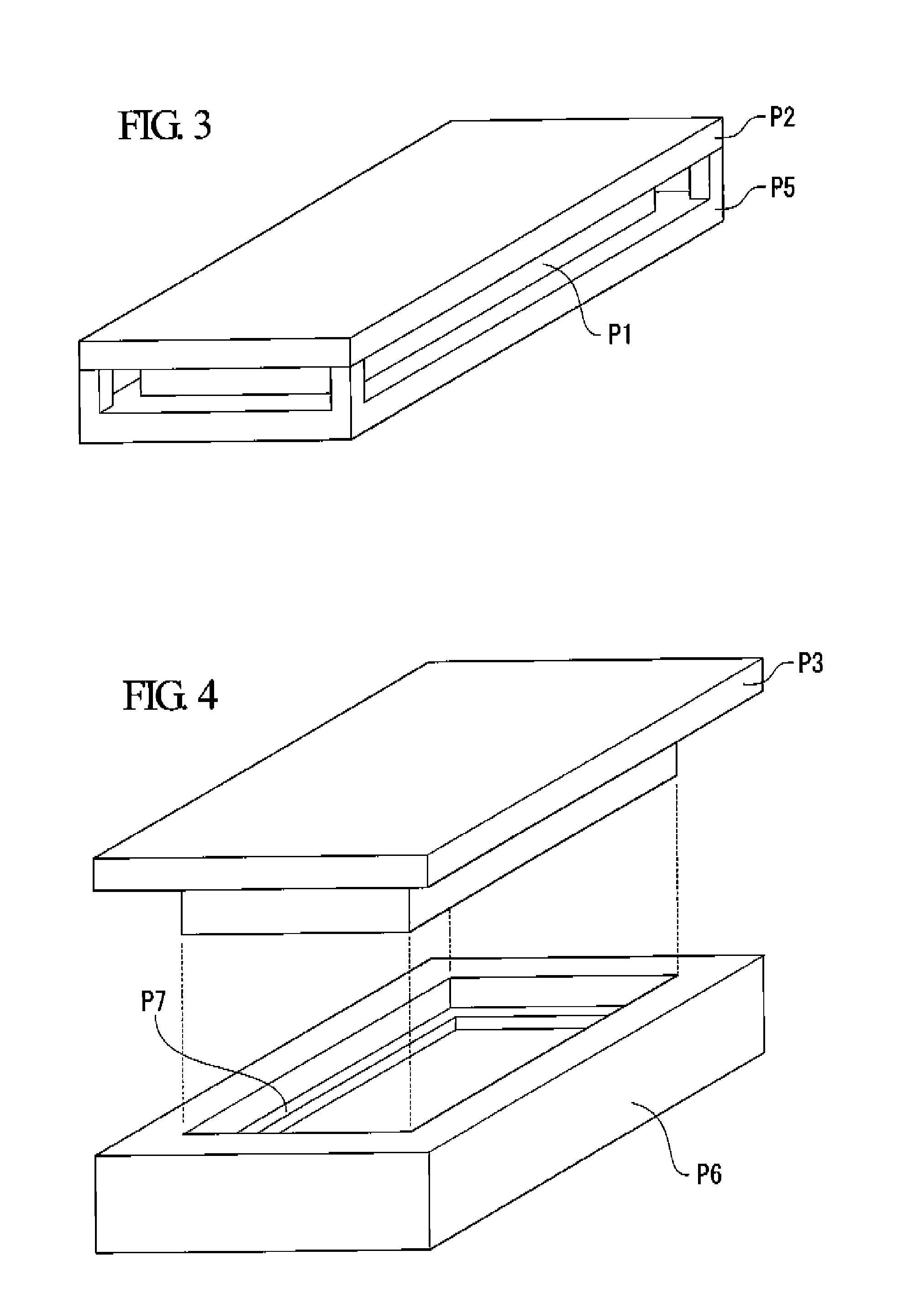Foam Production Method
- Summary
- Abstract
- Description
- Claims
- Application Information
AI Technical Summary
Benefits of technology
Problems solved by technology
Method used
Image
Examples
example 1
(1) Foamable Composition
[0326] A foamable composition A where 100 parts of a copolymer (as a decomposable compound) which was composed of tert-butylacrylate (20%), tert-butylmethacrylate (40%), and methyl methacrylate (40%) were mixed with 3 parts of bis(4-tert-butylphenyl)iodonium perfluorobutanesulfonate (trade name: BBI-109 manufactured by Midori Kagaku Co., Ltd.) as an iodonium salt-based acid generating agent, was used.
(2) Preforming Step
[0327] A diluted solution of MEK / ethyl acetate with a ratio of 65 / 35 (mass ratio) was used to prepare a 25% solution of the foamable composition having the aforementioned mixed ratio and this resulting solution was used as a coating liquid. This coating liquid was coated onto the silicone-treated surface of a supporting body, which is formed from silicone PET with a thickness of 75 μm (trade name: MR-75 manufactured by Mitsubishi Polyester Film Inc.), using an applicator having a clearance of 300 μm and the coated supporting body was left in...
example 2
[0331] Foams were produced according to the same method as that of Example 1 except that the pressure applied to the laminated sample in the foaming step was 2 MPa. The obtained cross sectional picture is shown in FIG. 6.
[0332] The same foam structure evaluation as that carried out in Example 1 showed that the obtained foam was a plate-like foam having an average cell diameter of 1.0 μm, a foaming magnification of 1.8 fold, and a thickness of 700 μm.
example 3
(1) Foamable Composition
[0333] The same one used in Example 1 was used.
(2) Preforming Step
[0334] A supporting body with a coated layer where the coated layer composed of a foamable composition having a thickness of 45 μm was present on a silicone PET was produced in the same manner as that in Example 1.
(3) Ultraviolet Ray Irradiation
[0335] The supporting body with a coated layer obtained in the aforementioned step (2) was subjected to ultraviolet-ray irradiation at an exposure of 2000 mJ / cm2 from the side to which the coated layer was attached using a metal halide lamp (trade name: multi metal lamp for ultraviolet Zion curing M03-L31 manufactured by Eye Graphics Co., Ltd.) as the light source. A film formed of a foamable composition, which is already irradiated with ultraviolet radiation, was obtained by peeling the coated layer off from the silicone PET after irradiating ultraviolet radiation.
(4) Foam Forming Step
[0336] 10 pieces of 5 cm×6 cm-sized films were cut from the fi...
PUM
| Property | Measurement | Unit |
|---|---|---|
| Temperature | aaaaa | aaaaa |
| Length | aaaaa | aaaaa |
| Pressure | aaaaa | aaaaa |
Abstract
Description
Claims
Application Information
 Login to View More
Login to View More - R&D
- Intellectual Property
- Life Sciences
- Materials
- Tech Scout
- Unparalleled Data Quality
- Higher Quality Content
- 60% Fewer Hallucinations
Browse by: Latest US Patents, China's latest patents, Technical Efficacy Thesaurus, Application Domain, Technology Topic, Popular Technical Reports.
© 2025 PatSnap. All rights reserved.Legal|Privacy policy|Modern Slavery Act Transparency Statement|Sitemap|About US| Contact US: help@patsnap.com



